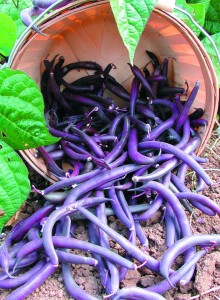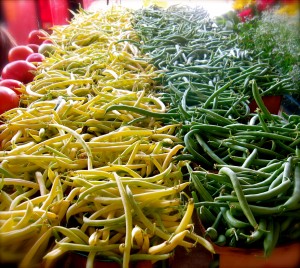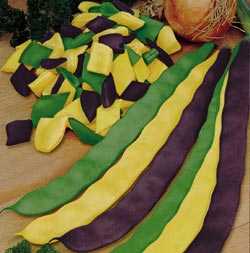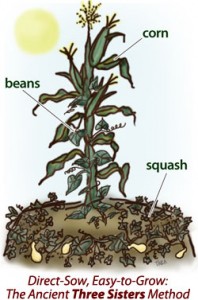How Now Brown Cowpea (or: “Chubeza and the Beanstalk”)
Said Rabbi Yona: How did beans get their name? They amuse the heart and tickle the intestines.” Yerushalmi Talmud
In honor of the green and yellow beans, and the first harvest of some handfuls of cowpea (lubia), I decided to do some research and share with you the wonders of the many- branched, intricate family of beans. In our field we have a host of members of this clan, the Leguminosae (Fabaceae) family and the Papilionaceae (Faboideae) sub-family. They arrive in the fields at various times of the year, from fall to winter, spring and even throughout the scorching Israeli summer. Like many families, their members have different preferences, different methods of adapting, and even a varied look and a distinctive “physical fitness.”
Some of them love the cool weather of autumn (peas), while others prefer the chill of winter (fava beans). Still others will bloom in the spring sun (yellow and green beans), and there are even those who love the dry chamsin heat waves (various cowpeas). Some of them are climbers, some grow in stocky bushes; others grow tall on lofty, erect plants. They all belong to the same family, but within the sub-family they branch off to different types and species.
In order to understand what we’re talking about, let us look at the botanist “family trees” (so to speak…): the taxonomy, the way the world of nature is categorized:
Our Papilionaceae belong to the kingdom of vegetation, to the phylum of flowering plants (and they are beautiful flowers!), to the class of dicotyledons (when the seed sprouts, two little leaves emerge from within the hard seed,) to the order of Fabales, and of course, to the family of Fabaceae, the sub-family of Faboideae. Interestingly, there are two other sub-families that belong to the legume family. One is the Mimosoidea, of whom the acacia is a member, and the other is the Caesalpiniaceae, where the carob, redbud (Judas Tree) and Tamarindus are prominent members. When you look at the fruits of these trees, you can see the family resemblance: their fruits are all pods in which hard seeds grow, just like the Faboideae.
Let’s go back to the Faboideae. Within this family there are various genera, which divide our friends in the field into different groups: there are the green and yellow beans (Phaseolus), growing next to the short cowpeas (Vigna), which grow on bushes, and also the long, climbing yard-long bean (also a Vigna), and soon we will greet the soybean (Glycine) in its fresh form (AKA Adamame). Other representatives are the peas (Pisum), the chubby garden pea, the snow pea, and finally of course, the Vicia genus, whose representative the fava bean commands a lot of respect in our field. Naturally there are many other types, encompassing the chickpea, lentils, clover, the Lucerne and others.
This is the season of beans and cowpeas, which we will focus upon this week. They have a lot in common, and greatly resemble one another. The ancient bean that grew in the Land of Israel is the cowpea. At the time of the Mishna, the common (green/yellow) bean was still mainly common in South America and not yet known in our area, while the cowpea, which probably originated in Africa, was the most common here. When Rabbi Yona says that the bean (shu’it) is amusing (mesha’a’sha’at), he must mean “filling and satisfying.” The verb sha’ah in ancient Hebrew has to do with plaster, meaning – filling and covering. The other part of Rabbi Yona’s words is the other, less amusing part of the (dry) beans and cowpeas- their tendency to create gas in the intestines…
Both the green beans and the cowpeas have fresh and dry versions, in a beautiful array of varieties. Even in our field we host the green been and its yellow sister, both of which grow on bushes; the Baladi cowpea (the one with the black eye) which grows on bushes, brought to us by Mohammed; a Thai variety, that grows on bushes, brought to us by Svet (with reddish-brown seeds); and Moshe’s (our landlord) cowpea— short but climbing, with brown seeds. Then there’s the yard-long bean (actually a cowpea variety), also known as the asparagus bean or Chinese long bean (and in Israel known as Thai bean), with black seeds, which grows upwards. We usually trellis it on both sides of the pepper in order to stretch their shade nets along its polls.
The bean and cowpea seeds come in a variety of colors. Sometimes their pods look a lot alike, but there are, of course, many other species that we don’t have in our field, like the spotted reddish cranberry beans, the light green flat (Romano) beans and even bright purple beans. Here’s a gallery of pictures, which I swear I didn’t touch up in any way:
The bean’s tendency to climb brought it much respect in ancient American farming, as one of the “Three Sisters.” Archeologists have frequently found ancient Peruvian and Mexican farming sites with remnants of bean seeds together with those of corn and squash. The bean was seeded there together with the corn and squash, while the corn plants were used as trellising poles for the climbing bean. The squash covers the earth as a living mulch that serves to prevent weeds and water drainage, and the bean fixates nitrogen (see explanation below,) providing nutrients for both of her sisters:
Here and here are some explanations on how to prepare a bed like this one in your garden (and even in containers on your porch):
The climbing and bush species apparently developed separately and in parallel by different farmers in different areas. The bushy species developed in Peru contain a gene that makes them grow in miniature form by limiting the number of branch segments, while turning the plant tissues (the branches and leaves) to reproductive tissues (flowers and pods). The explanation for this is that in Peru the cornfields were limited, which is why a climbing-specie would have provided another burden for local farmers needing to support the climbing plants. (We definitely understand them, as we annually insert the poles into the ground and spread the nets for vining.) This is why Peruvian farmers must have chosen to raise plants from seeds that grew in the form of a bush, and those were the species that developed there. In Mexico, however, farmers chose to grow species that tended to crawl, since the bean grew near the corn that was used as a natural trellising pole, saving extra work for the farmer.
The climbing beanpole was immortalized by the tale of Jack and the Beanstalk, where a poor boy climbs a huge beanstalk that he grew from magic seeds, embarking on a search for his identity, where he finally finds happiness and wealth, and, of course, triumphs over evil. The bean is indeed magical in another sense- as a member of the legume family, it has many characteristics that help improve the earth. In a symbiotic process with a certain bacteria, it can fixate nitrogen from the atmosphere and store it in the earth in a form that is available to plants that grow with it or afterwards; its long roots grasp the earth and assist in preventing erosion, a feature that makes it very easy to grow, as it will cling to difficult and barren earth as well. In South America these qualities make the local plant “worth its weight in gold.” A Mucuna bean is seeded in Brazil, Nicaragua, Guatemala, Honduras and other places, in small, local farms, on the slopes of rocky mountains as a “cover crop.” The plants are cut and left in place while still green, and the next plants are planted in their organic matter (specifically corn.) The result is a doubling and even tripling of the quantities of corn, and an improvement of the soil for years to come. Indeed, a magic bean!
The bean is a vegetable very high in nutrients. It is rich in protein (the green bean even more so than the yellow), iron, vitamins A and C, folic acid and dietary fibers. It can be cooked, steamed, roasted, pickled, added to pasta, rice, salad and any vegetable stir—adding taste, color and festivity to your meal.
Wishing you all an amusing week,
Alon, Bat Ami and the Chubeza team
___________________
This week’s basket includes:
Monday: cucumbers & fakus, zucchini & squash, beets, potatoes, Swiss chard, tomatoes, parsley, green onions, lettuce, red peppers, green or yellow beans
In the large box, in addition: corn, cilantro, leek
Fruits box: small: banana / strawberries, apples, cherries. Large: watermelon, cherries, apples
Wednesday: cucumbers & fakus, zucchini & squash, beets, potatoes, Swiss chard, tomatoes, parsley, green onions, lettuce, carrots, green or yellow beans or lubia (cowpea)
In the large box, in addition: corn, cilantro, leek
Fruits box: small: apricots, apples, cherries. Large: watermelon/melons, cherries, apples __________________
Beans recipes:
Garlic Green (or Yellow) Beans
Pasteikalach -Yellow Bean Dish (Heb and Eng)
Fresh Green Bean Salad with Asian Dressing
Stir-Fried Green Beans, Plum Cherry Tomatoes and Tofu
And many many more…






